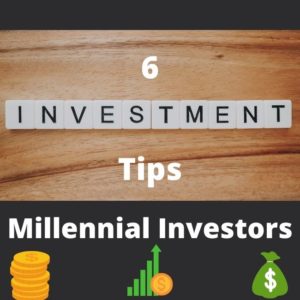By Michael J. Wiener
Special to the Financial Independence Hub
The last time I had to put a lot of effort into thinking about my finances was back when I retired in mid-2017. I had ideas of how to manage my money after retirement, but it wasn’t until a couple of years had gone by that I felt confident that my long-term plans would work for me. I had my portfolio on autopilot, and my investing spreadsheet would email me if I needed to take some action.
I was fortunate that I happened to retire into a huge bull market. I got the upside of sequence-of-returns risk. The downside risk is that stocks will plummet during your early retirement years, and your regular spending will dig deep into your portfolio. Happily for me, I got the opposite result. My family’s spending barely made a dent in the relentless rise of the stock market.
However, stock prices have become crazy, particularly in the U.S. One measure of stock priciness is Robert Shiller’s Cyclically Adjusted Price-Earnings (CAPE) ratio. In the U.S., the CAPE ratio is now just under 40. The only other time it was this high in the last 150 years was during the dot-com boom in the late 1990s and early 2000s. Just before the 1929 Black Tuesday stock market crash, the CAPE was only about 30.
Outside the U.S., prices aren’t as high, but they are still elevated. My stock portfolio’s blended CAPE is a little under 32 as I write this article. Even if stock prices were cut in half, this would just bring the CAPE close to the average level over the past century. To say that these thoughts made me think hard about whether I should change how I manage my portfolio is an understatement.
A change in thinking about high stock prices
For a long time, my thinking was to ignore inflated stock prices and just rebalance my portfolio as necessary to maintain my chosen asset allocation percentages. I have a planned “glidepath” for my stock/bond mix that has me about 20% in bonds at my current age and increasing as I get older. My bond allocation consists of cash and short-term bonds, and the rest is spread among the world’s stock indexes. I saw no reason to change my plan as my portfolio grew.
Then a question changed my thinking. If the CAPE rises to 50, or 75, or even 100, would I still want such a high stock allocation? It’s not that I expect the U.S. or much of the rest of the world’s stocks to become as overvalued as Japanese stocks in 1990, but I should be prepared for how I’d respond if they do.
At a CAPE of 50, I wouldn’t want more than about half my money in stocks, and at 100, I wouldn’t want much in stocks at all. So, even though I’m comfortable with 80% stocks at a blended CAPE of 32, something would have to change if the CAPE were to rise from 32 towards 50.
A first attempt
Once I realized I definitely would reduce my stock allocation in the face of ridiculously inflated markets, I had to work out the details. I started with some rules. First, I don’t want any sudden selloffs. For example, I don’t want to hold a large stock allocation all the way up to a blended CAPE of 39.9 and suddenly sell them all if the CAPE hits 40. A second rule was that I don’t want any CAPE-based adjustment to apply unless the CAPE is above some threshold level.
As the CAPE kept climbing, I felt some urgency to choose a plan. My first attempt was to change nothing if the CAPE is under 30, and when it’s above 30, I multiplied my bond allocation by the CAPE value and divided by 30. I implemented this idea in my portfolio as an interim plan before I analyzed it fully.
Another adjustment I made a little earlier was to reduce my expectation for future stock returns. When the current CAPE is above 20, I now assume the CAPE will drop to 20 by the end of my life. This doesn’t directly affect my portfolio’s asset allocation, but it reduces the percentage of my portfolio I can spend each year during retirement. When stocks rise and the CAPE rises, my portfolio grows, and this increases how much I can spend. But then this new rule reduces my assumed future stock returns, and reduces my safe spending percentage somewhat. Increasing stock prices still allow me to spend more, but this rule slows down the increase in my spending.
A new simpler rule for adjusting my stock allocation based on high CAPE values
I’m still happy with the way I’ve adjusted my expectation for future stock returns when the CAPE is high, but I’ve changed the way I adjust my bond allocation to the CAPE. I now have a simpler rule I named Variable Asset Allocation (VAA) that better matches my thinking about what I’d want if the CAPE got to 50 or 100.
VAA: If the CAPE is above 25, I add CAPE minus 25 (taken as a percentage) to my age-based bond allocation.
For example, without VAA my current bond allocation based on my age is about 20%. The current blended CAPE of my portfolio is about 32, so I add 32–25=7% to my bond allocation. So, I’m currently 27% in bonds and 73% in stocks.
This might not seem like much of a bond allocation adjustment in percentage terms, but it’s a bigger adjustment in dollar terms. Consider the following example. Suppose a $500,000 portfolio with a 20% bond allocation sees a jump in the CAPE from 25 to 32. This is a 28% increase in stock prices. So, we started with $100,000 in bonds and $400,000 in stocks, and the stocks jumped in value to $512,000 for a total portfolio size of $612,000. When we adjust the bond allocation to 27% in accordance with VAA, we have $165,000 in bonds and $447,000 in stocks. Of the $112,000 jump in stock value, we shifted $65,000 over to bonds, and left only $47,000 of it in stocks. Although the bond allocation went from 20% to 27%, a 35% increase, the dollar amount in bonds rose 65%. This is a substantial shift, and it leaves a healthy bond buffer if stock prices subsequently crash. Continue Reading…







